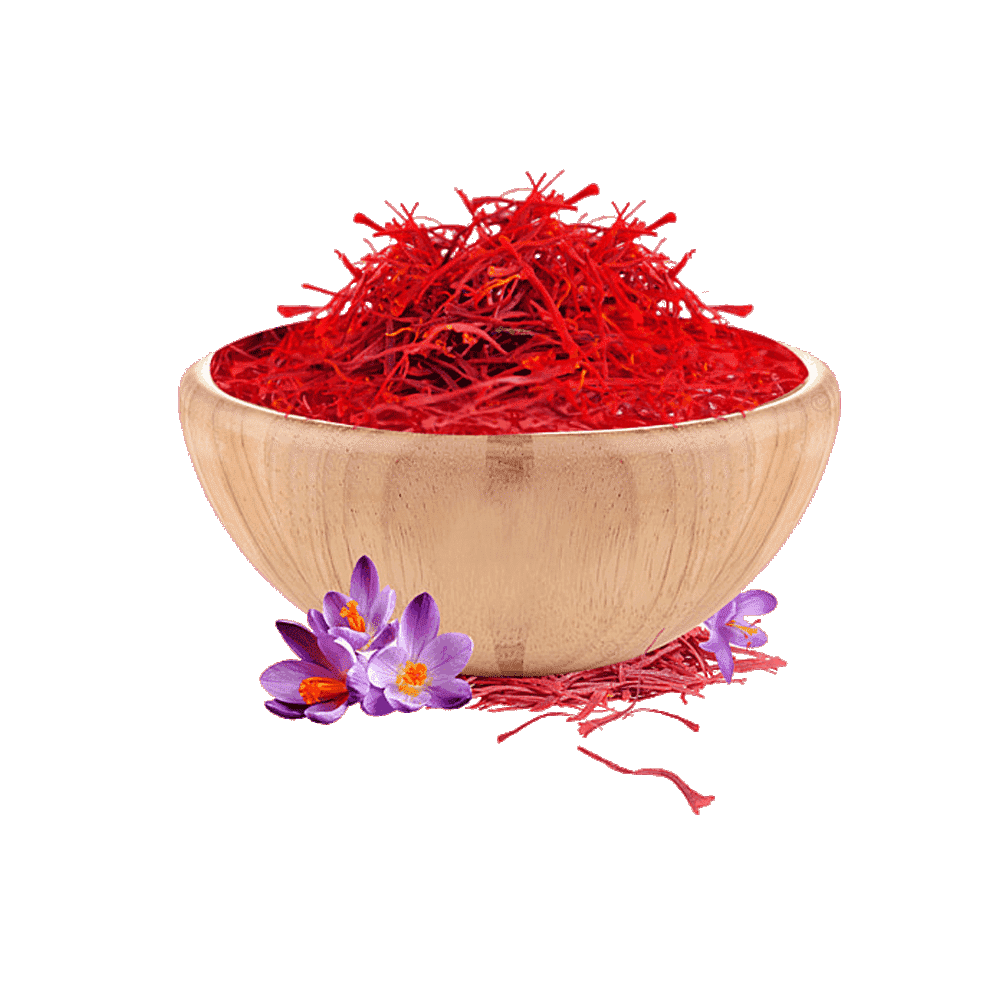Saffron

Description:
Saffron is a spice that is derived from the flower Crocus Sativus, which is also known as Saffron Crocus. Saffron is made from the filaments which grow inside of this flower. The threads which are made from the stigma and style of the filaments are what we call saffron. It is originated in Iran, although other countries produce it as well. Saffron’s taste and fragrance is the result of the chemicals Picrocrocin and Safranal. Also, its coloring power is from the pigment called Crocin. Some people call Saffron Red Gold because this spice is the world`s most expensive spice by weight. The reason behind this high price is that it is super difficult to manually extract large number of stigmas.
Health Benefits:
Saffron is a powerful Antioxidant. It helps improve the mood and treat depressive symptoms, has cancer-fighting properties, reduces PMS Symptoms, acts as an aphrodisiac, reduces appetite, and aids weight loss.
Uses:
Persian, Indian, European and Arab cultures all highly use Saffron in their cuisines, confectionaries, and liquors. It is used as a spice in many culinary products such as margarine, sausages, dairy products such as butter and cheese, sweets, candy, ice cream, jelly, beverages, wine, chicken, rice, seafood, soup, bread, and cake.
Available Types
1. Negin
Properties:
| 1 | Crocin (Coloring Strength) | minimum 215-240 |
| 2 | Safranal (flavor & smell) | minimum 35 |
| 3 | Picrocrocin (bitterness) | minimum 80 |
| 4 | Moisture | under 7% |
Description: Negin translates to precious stone in Farsi. Negin Saffron is the most expensive and high-quality type of Saffron. When three stigma threads are attached together, it is called Negin. Negin Saffron has a long thread, like Mancha (Pushal) and at the same time, it has even more coloring strength than Sargol.
2. Sargol
Properties:
| 1 | Crocin (Coloring Strength) | minimum 205-225 |
| 2 | Safranal (flavor & smell) | minimum 35 |
| 3 | Picrocrocin (bitterness) | minimum 80 |
| 4 | Moisture | under 8% |
Description: Sargol Saffron consists only of Dark Red Stigma (thread) Tips, and all the white and orange parts are removed. This saffron is the second most expensive type of saffron after Negin Saffron. Sargol in Farsi translates to the tip of the flower.
3. Pushal
Properties:
| 1 | Crocin (Coloring Strength) | minimum 200-220 |
| 2 | Safranal (flavor & smell) | minimum 30 |
| 3 | Picrocrocin (bitterness) | minimum 75 |
| 4 | Moisture | under 8% |
Description: Pushal Saffron is made of the stigma part. During production the complete, red-colored parts are maintained along with a little bit of the orange-colored threads. All the three stigma threads are attached like the Negin Saffron. Since it contains more yellow parts from the style of the plant it has higher floral waste, about 5%. This type of coloring strength is lower than the other Saffron variants.
4. Dasteh
Properties:
| 1 | Crocin (Coloring Strength) | minimum 180-200 |
| 2 | Safranal (flavor & smell) | minimum 30 |
| 3 | Picrocrocin (bitterness) | minimum 75 |
| 4 | Moisture | under 8% |
Description: Bunch Saffron has different names, such as Dasteh Saffron or Dokhtar Pich Saffron. Dasteh Saffron is the complete stigma (filament) of saffron in bundles. It contains the red-colored parts as well as orange, yellow and white parts. Its coloring strength is relatively low. The advantage of Dasteh Saffron is its economic price.
5. Powder
Description: Saffron Powder is not a kind of saffron such as Negin or Pushal. It is a form of saffron, which producers make from grinding the saffron threads in the industrial scope.
The final product color is slightly lighter than the thread itself, as a result the coloring strength is a little bit less. the reason why saffron powder has high demand is that it is much easier for producers and customers to measure it accurately.
Also, it is much easier to use in preparing a dish as it mixes up with the ingredients and spices perfectly. Since it dissolves easily into foods and dishes, there will not be any visible threads of saffron in your finished dish.

